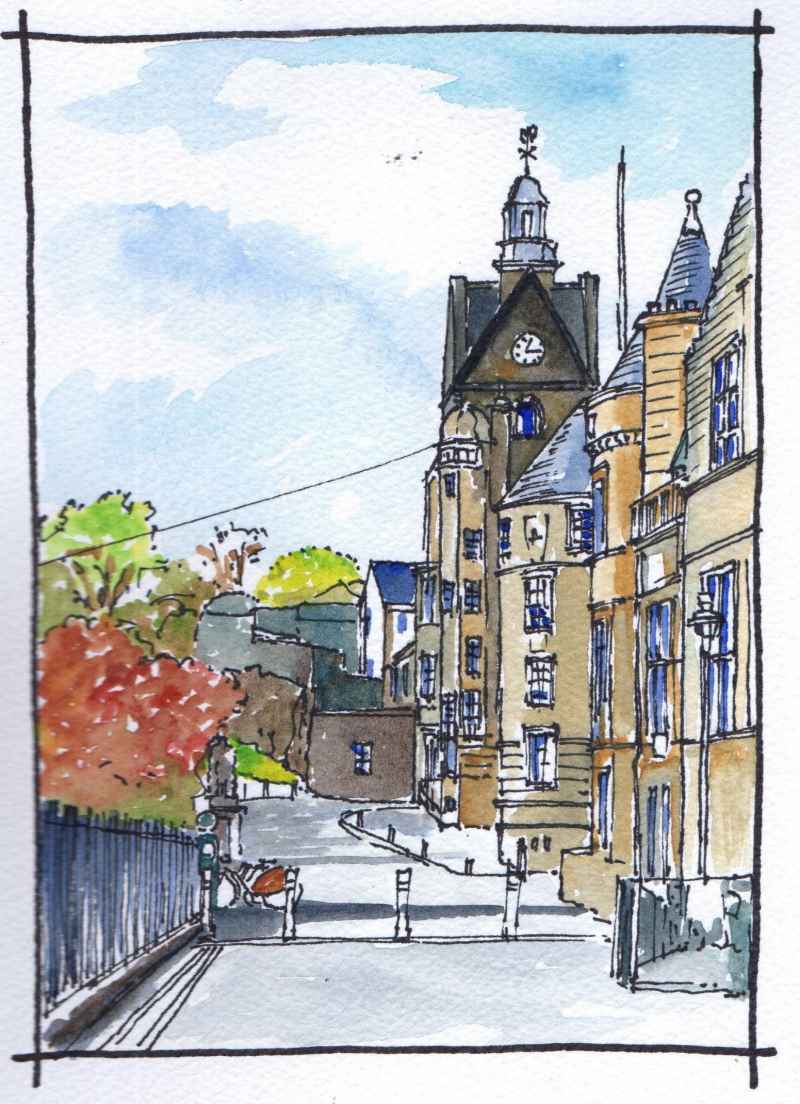The town walls of Stirling, Scotland, dating from circa 1547, remain in part along the south west side of the historic settlement. In this view along the ‘back walk’ they have been interupted by a range of enthusiastic Edwardian public buildings in the baronial style with crow stepped gables, turreted towers and heraldry. These are the Central Library of 1904 (nearest) and the Muncipal Buildings of 1914 with its tall clock tower.
|
|
|


